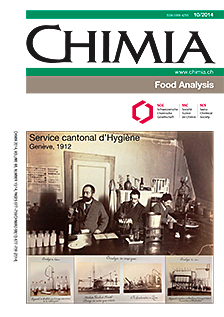The TTC Approach in Practice and its Impact on Risk Assessment and Risk Management in Food Safety. A Regulatory Toxicologist's Perspective
DOI:
https://doi.org/10.2533/chimia.2014.710Keywords:
Cyclo-di-badge, In silico toxicology, Polychlorinated butadienes, Structural alerts, Threshold of toxicological concernAbstract
There are many substances in food and drinking water from different contamination sources for which only insufficient or no toxicity data exist. In order to prioritize and preliminarily assess the human health risks, the threshold of toxicological concern (TTC) approach was developed between 1996 and 2004. This concept has since been applied increasingly by regulatory food safety authorities. In parallel, the safety of this approach has been discussed by stakeholders, primarily on a conceptual basis. However, real examples showing the practical benefits of this approach have not been discussed. In this paper, the technical feasibility, applicability, safety, and further benefits of the TTC approach are illustrated and discussed based on four real cases: 1) halogenated contaminants of unknown origin in the drinking water (polychlorinated butadienes), 2) an unwanted by-product from epoxy resin coatings in canned fish (Cyclo-di-BADGE), 3) two cyclic compounds occurring in polyamide food packaging materials and kitchen utensils, and 4) mycotoxins (from Alternaria). These examples from different fields of application clearly demonstrate that the results of the TTC approach are an extremely useful starting point for adequate decisions and actions (if necessary) by risk assessment and risk management in food safety.Downloads
Published
2014-10-29
How to Cite
[1]
B. J. Brüschweiler, Chimia 2014, 68, 710, DOI: 10.2533/chimia.2014.710.
Issue
Section
Scientific Articles
License
Copyright (c) 2014 Swiss Chemical Society

This work is licensed under a Creative Commons Attribution-NonCommercial 4.0 International License.







